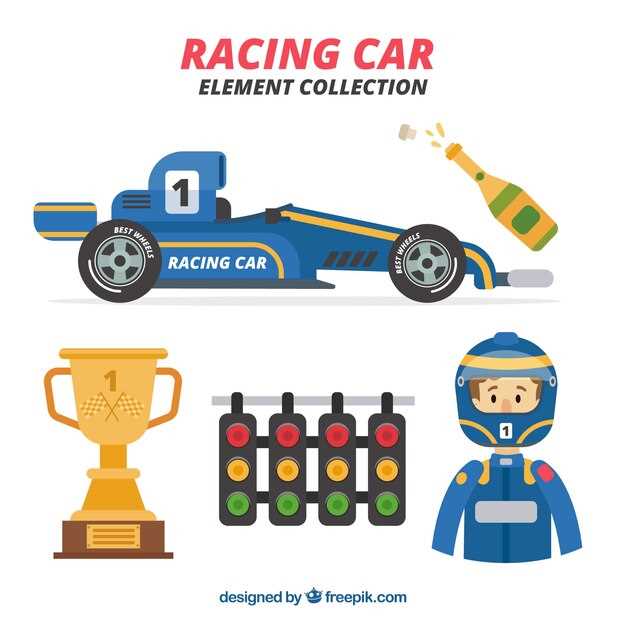
What It Takes to Compete in SCCA Autocross
- George Harris
- 0
- Posted on

The world of SCCA autocross provides a unique setting for automotive enthusiasts to test their driving skills in a highly competitive environment. Unlike traditional racing, autocross emphasizes precision, control, and the ability to navigate complex courses at speed. To excel in this sport, participants must not only have a command of their vehicle but also a strategic approach to each event.
Building a solid foundation in essential driving techniques is crucial. Understanding vehicle dynamics, such as weight transfer and tire grip, empowers drivers to make informed decisions on the course. Additionally, honing skills in braking, cornering, and acceleration can significantly improve lap times. It is essential to practice these techniques regularly to enhance muscle memory and ensure consistent performance under pressure.
Equally important is the development of a strategic mindset. Analyzing the course layout and identifying key elements such as tight turns, slaloms, and changing surfaces can provide a competitive edge. Pre-event walkthroughs allow drivers to visualize their lines and plan their approach, making them better prepared on the day of competition. Understanding how to optimize vehicle setup and tire pressures for different conditions is another fundamental aspect of succeeding in autocross.
In summary, thriving in SCCA autocross requires a balance of technical driving skills and strategic planning. By mastering the vehicle’s capabilities and approaching each course with a clear plan, competitors can maximize their performance and achieve their goals in this exhilarating motorsport discipline.
Mastering Vehicle Control Techniques for Optimal Performance

Effective vehicle control is essential for achieving optimal performance in SCCA autocross events. Mastery of various techniques can significantly enhance your speed, consistency, and overall driving experience.
Weight Transfer is a fundamental concept in vehicle dynamics. Understanding how weight shifts during acceleration, braking, and cornering allows drivers to optimize traction. For instance, during corner entry, applying the brakes transfers weight to the front tires, increasing front-end grip. Conversely, during acceleration out of a corner, weight shifts to the rear, enhancing rear tire traction. Practicing smooth inputs helps maintain vehicle balance and reduces the risk of oversteer or understeer.
Throttle Control plays a crucial role in maintaining momentum. Utilizing the throttle smoothly and progressively can help manage the vehicle’s power delivery, especially through corners. Instead of sudden throttle applications, aim for gradual increases to prevent loss of traction. Learning to read the road surface conditions will assist in adjusting throttle inputs to maintain optimal grip.
Steering Techniqueslook, point, and steer by focusing your gaze ahead to identify the correct steering input well before reaching the apex of a turn. This technique helps establish a smoother line and minimizes abrupt steering corrections.
Braking Techniques such as threshold braking and trail braking are essential for effective slowing down without sacrificing cornering speed. Threshold braking involves braking just before the tires begin to lock up, providing maximum deceleration. Trail braking, on the other hand, is releasing the brakes gradually as you enter the corner, which helps maintain front tire grip and assists in turning the vehicle more effectively.
Practice and Feedback are key components of mastering these skills. Regularly participating in practice events and seeking constructive feedback from experienced drivers or instructors can accelerate your learning process. Video analysis of your runs can also provide valuable insights into your driving habits, highlighting areas for improvement.
In summary, mastering vehicle control techniques through understanding weight transfer, throttle and steering control, and effective braking strategies can dramatically enhance your performance in SCCA autocross. Continuous practice and the willingness to learn from feedback are imperative for developing these essential skills.
Analyzing Course Layouts for Strategic Advantage

Effective analysis of course layouts is crucial for optimizing performance in SCCA autocross events. Understanding the nuances of each layout allows drivers to develop strategies that exploit the unique characteristics of the course. Begin by reviewing the course map provided prior to the event, paying close attention to the layout’s turns, sections, and elevation changes.
Identify key elements such as the placement of cones, tight corners, and wide sections, which can influence speed and handling. Note sections where quick transitions are necessary and where momentum can be maximized. Additionally, focus on the surface of the course, as variations in grip can affect how a car behaves in different sections.
Study the apex of each turn: knowing when to turn in and where to accelerate out can significantly improve lap times. Practicing visualizing the lines you will take through the course helps establish a mental map that can enhance your reaction time. Consider the optimal racing line, which typically involves entering corners wide, hitting the apex smoothly, and exiting with acceleration.
Additionally, assess how different sections of the course may favor specific vehicle characteristics. For example, courses with tight turns may benefit cars with excellent handling and braking capabilities, while those with long straights and sweeping turns might favor higher horsepower vehicles. Tailor your vehicle setup and tire choices based on the expected course dynamics to gain an edge.
It can also be beneficial to observe competitors during practice runs. Take notes on their approaches to various sections and identify successful strategies employed by others. This observational analysis can provide insights into line choices, braking points, and acceleration strategies that can be integrated into your own runs.
Lastly, use timing and data collection methods, such as app-based telemetry, to compare your performance against your observations of the course. Analyzing data from your runs can reveal patterns and highlight areas for improvement, allowing for continuous refinement of your approach in future events.
Utilizing Data and Feedback for Continuous Improvement
In the realm of SCCA Autocross, leveraging data and feedback is essential for drivers aiming to enhance their performance. By systematically collecting and analyzing data from each run, participants can identify patterns, strengths, and weaknesses in their driving techniques.
One effective way to gather data is through the use of time trial software and GPS-enabled devices. These tools allow drivers to record lap times, sections times, and even speed at various points on the course. By reviewing this data, drivers can pinpoint specific areas of improvement, such as braking points and cornering speed.
Moreover, the power of video analysis cannot be overstated. Recording runs from multiple angles provides visual feedback that complements numerical data. Watching oneself drive can reveal improper techniques, incorrect line choices, and other habits that might not be evident in raw data alone. By integrating video analysis into their training, drivers can achieve a deeper understanding of their performance.
Feedback from experienced peers or coaches also plays a crucial role. Having more seasoned drivers review one’s runs and provide constructive criticism can lead to significant insights that might be missed in self-analysis. Engaging in discussions about line choices, car control, and mental approach to competition can enrich a driver’s skill set.
Setting specific, measurable goals based on the collected data is essential for sustaining improvement. Drivers should track their progress over time, focusing on incremental advancements rather than seeking immediate perfection. This approach fosters a growth mindset and encourages ongoing learning.
Finally, maintaining a journal to document performance insights, lessons learned, and feedback received can be immensely beneficial. This record not only serves as a reference for future practice sessions but also helps reinforce the connection between data analysis and real-world application on the course.
By effectively utilizing data and feedback, SCCA Autocross competitors can ensure continuous improvement, ultimately leading to enhanced performance and greater success in their racing endeavors.
